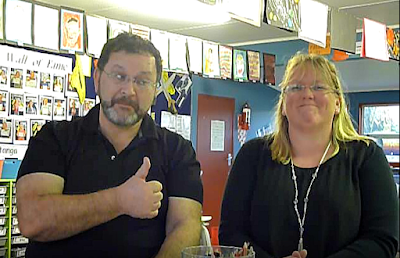Individual Task (* My Notes - Reflections)
Take time to view and reflection on others from you areas
Take time to view and reflection on others from you areas
(Powtoon)
Interesting to view what others have done and take an opportunity to see what others have done
augmentation - tech acts as a direct tool
modification - remodify/redesign new parts of the task
redefinition - design and create a new task
TPACK
Content - what subject material
pedagogical knowledge - the how teacher skills
technology - selecting the best techn to support the learning
Modelling Innovation
Two simple models, used by many teachers, can help us to plan and analyse our digital classroom innovations. Substitution Augmentation Modification Redefinition (SAMR) supports the design and development of learning experiences that utilize technology. Technological Pedagogical Content Knowledge (TPACK) attempts to identify the nature of knowledge required by teachers for technology integration in their teaching.
SAMR
The SAMR model was developed by Ruben Puentedura and disseminated through Apple education initiatives. It is a very simple layered model of ways that technology can be integrated into teaching and learning. For further information see Puentedura's Weblog and the TKI page on Using the SAMR model. Mark Anderson provides a very similar 4 layer model that focuses more on teacher confidence in delivering digital learning
TPACK
TPACK stands for Technological Pedagogical Content Knowledge (in the original version it was call TPCK). TPACK is a framework developed by Punya Mishra and Matthew Koehler that identifies the knowledge teachers need to teach effectively with technology.The TPACK framework is somewhat more academic than SAMR and extends Shulman’s idea of Pedagogical Content Knowledge. Puentedura (2010) links SAMR and TPACK together..
For further information see the tpack.org web site
You may find this TPACK and SAMR assessment rubric useful when assessing classroom activities against these frameworks.
Google Maps / Google Earth / Tour Builder group task
Create a Google Doc where you design a learning activity to last 20 minutes using either Google Earth / Maps or Tour Builder and informed by SAMR and/or TPACK. Make sure that your group members can edit the document and anyone ‘Can comment’ on your document. Once done, link your learning activity document onto the Google+ community (session uploads) and ask others to critique it.
If you want to focus on Google Maps, you may find Thom Cochrane’s image-based guide to creating a custom map helpful. For more information about Tour Builder, see https://tourbuilder.withgoogle.com/
Paul and I created this tour using Google Tour Builderhttp://tinyurl.com/ycdg74bw
Conditions for Classroom Technology Innovations
To what extent do you think the homework reading, a research article from 2002, is still relevant?
Whilst this is from 2002, the article has may relevant points. Many things mentioned still are barriers in today schools and our classrooms
Creativity and Innovation
According to Tucker (2008), there is a relationship between being creative and innovative. Creativity helps coming up with ideas and being innovative means bringing them to life. Hatching ideas is the ‘creative’ part; bringing them to life successfully in the form of a new product or service or management method is what makes a raw idea an innovation.
Warlow (2007) defines the following attributes of an innovator:
- Curious; constantly questioning things
- Open to new ideas; putting oneself in situations where one can receive stimulation
- Dare to be different; being prepared to act against accepted or conventional wisdom and challenge the unchallengeable
- Be ready; as innovative ideas can strike at any time, there is a need to capture them before they disappear from the mind
- Persistent; time is needed in finding the solutions which are innovative
- Collaborative; ideas can be thought of when working with others
The World Economic Forum (2016) in analysing 21st century skills, identified creativity and collaboration as competences, but curiosity is defined as a character quality, as is initiative. To be innovative, we need not only competencies but also character qualities.


No comments:
Post a Comment